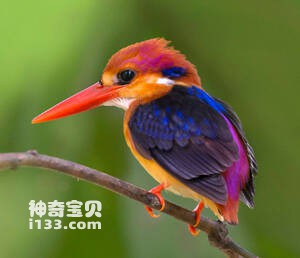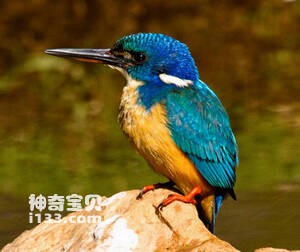
Ceyx gentianus
Ceyx gentianus,Makira Dwarf Kingfisher
Makira Island three-toe Kingfisher scientific name Ceyx gentianus, foreign l···

Ceyx dispar
Ceyx dispar,Manus Dwarf Kingfisher
The Manus Island three-toe Kingfisher is known as Ceyx dispar and Manus Dwar···

Ceyx nigromaxilla
Ceyx nigromaxilla,Guadalcanal Dwarf Kingfisher
The Guadalcanal Dwarf Kingfisher is known as Ceyx nigromaxilla and Guadalcan···

Ceyx malaitae
Ceyx malaitae,Malaita dwarf kingfisher
The scientific name of the three-toe kingfisher on Malaita Island is Ceyx ma···

Ceyx collectoris
Ceyx collectoris,New Georgia dwarf kingfisher
New Georgia dwarf kingfisher (Ceyx collectoris, New Georgia dwarf kingfisher···

Ceyx meeki
Ceyx meeki,North Solomons dwarf kingfisher
The North Solomons dwarf kingfisher is known as Ceyx meeki and North Solomon···

Ceyx sacerdotis
Ceyx sacerdotis,New Britain dwarf kingfisher
New Britain dwarf kingfisher: Ceyx sacerdotis, New Britain dwarf kingfisher,···

Ceyx solitarius
Ceyx solitarius,Papuan dwarf kingfisher
The Papuan dwarf kingfisher is known as Ceyx solitarius and Papuan dwarf Kin···

Ceyx cajeli
Ceyx cajeli,Buru Dwarf Kingfisher
The three-toe Kingfisher is known as Ceyx cajeli and Buru Dwarf Kingfisher.P···

Ceyx wallacii
Ceyx wallacii,Sula Dwarf Kingfisher
The three-toe Kingfisher is Ceyx wallacii and Sula Dwarf Kingfisher. Its spe···

Ceyx margarethae
Ceyx margarethae,Dimorphic dwarf kingfisher
The species is known as Ceyx margarethae, Dimorphic dwarf kingfisher, and it···

Ceyx lepidus
Ceyx lepidus,Variable Kingfisher,Moluccan dwarf kingfisher
The Moluccan three-toe Kingfisher is known as Ceyx lepidus, Variable Kingfis···

Ceyx fallax Schlegel
Ceyx fallax Schlegel,Sulawesi Pygmy Kingfisher
Ceyx fallax Schlegel, Sulawesi Pygmy Kingfisher, has two subspecies (1.Ceyx ···

Ceyx melanurus
Ceyx melanurus,Philippine Dwarf-kingfisher
Ceyx melanurus, Philippine Dwarf kingfisher, has three subspecies (1.Ceyx me···

Ceyx erithaca
Ceyx erithaca,Three-toed Kingfisher
The scientific name Ceyx erithaca, three-toed Kingfisher, has Three subspeci···

Alcedo semitorquata
Alcedo semitorquata,Half-collared kingfisher
Alcedo semitorquata, Half-collared kingfisher, is a bird belonging to the cl···

Alcedo quadribrachys
Alcedo quadribrachys,Shining-blue Kingfisher
Scientific name flash blue Kingfisher Alcedo quadribrachys, Shining - blue K···

Alcedo euryzona
Alcedo euryzona,Blue-banded Kingfisher
Alcedo euryzona, also known as the Blue-banded Kingfisher, has two subspecie···

Alcedo coerulescens
Alcedo coerulescens,Small Blue Kingfisher,Cerulean kingfisher
Alcedo coerulescens, or Small Blue Kingfisher or Cerulean kingfisher, is a s···

Alcedo atthis
Alcedo atthis,Common Kingfisher,European Kingfisher,Kingfisher, Martin-pêcheur d'Europe, رفراف شائع
The Common Kingfisher scientific name Alcedo atthis, foreign language name C···

Alcedo vintsioides
Alcedo vintsioides,Madagascar Kingfisher
Alcedo vintsioides is known as Madagascar Kingfisher and Alcedo vintsioides,···
